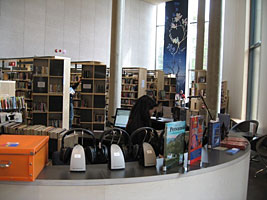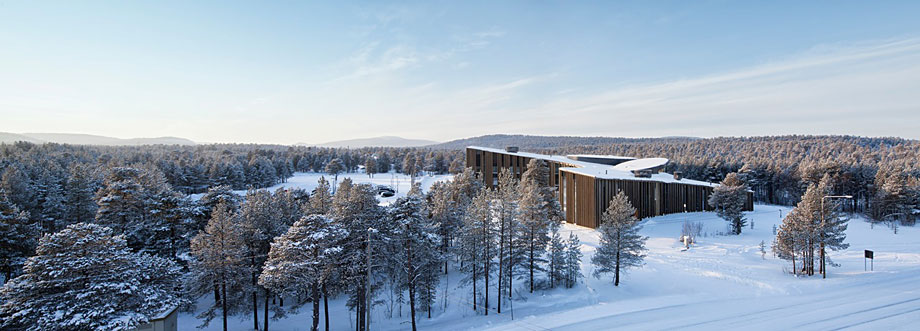Sámi sitelines

Sajos – the Sámi cultural centre in the Northern Finnish town of Inari has put both its designers, Oulu's Halo Architects, and the country's Northern Sami cultural community on the map. Here fellow Northern Finnish architect Lauri Louekari admires the results
Sajos - Culture
The background to the recently completed Sajos Sámi Cultural Centre is both interesting and unusual. Funded by the Finnish government, the Centre is a building for the Finnish Sámi people and community. Sajos, which means ‘settlement’ in Inari Sámi, is a multi-functional cultural building, but it is not only focused on Sámi culture and education. Indeed, the centre is the new home to Finland’s Sami parliament, which is integrated into the building. There are further aspects, including at its heart, a public meeting space, which serves as an all-purpose auditorium as part of the culture centre’s second layer of public facilities. In addition there is a Sámi Film Centre and similarly, a Sámi Music Centre. Lastly, complementing these latter two bodies, there is an extensive library of Sámi literature.
Sámi is part of the Uralic group of languages, and is closely related to the Finnish language. However today there are many Sámi different languages and dialects that have evolved over the passage of time, with six main languages, and within these particular sub-groupings of the language, including in Northern Finland, Inari, Northern and Skolt Sámi. Just as in other countries with multi-lingual populations, where Government parliaments require simultaneous translation of ongoing debates, discussion and speeches, so the Sajos parliament integrates five small interpretation areas to communicate between one dialect and another.



The cornerstone of the Sámi people’s cultural identity is their nature-centric way of life, which tries to preserve nature and its features. When I visited Sajos, and afterwards when writing this piece I sought to look at Sajos from this perspective. At the same time, the distance of Sajos, located in the Finnish Sámi’s heartland town of Inari, and far from Helsinki, is also significant. Overland, the distance between the two seats of Government is around one thousand kilometers. So, it was not completely surprising when, on my visit to Sajos last autumn, my host Merja Männikkö, Sajos’s project planner, pointed out how she felt there were parallels between the building and Sami culture. As she showed me around the culture centre, Ms Männistö told me that she can see the similarities between the building and the traditional Sámi Duodji or Handcraft. This, though, was only the first of various physical and symbolic connections.
Sajos – the building


As a concept, linking spatial configuration with the form of objects appears contrived, but here it seems to work. Despite the fleeting thought that the architects are playing with form, as an entity the solution feels inspired.
However, the most interesting thought about Sajos is the spatial configuration with its reference to nature. The trajectories generated by the curved forms create a profound link, much more so than do the forms referring to objects, to the Sami way of life, which is so intrinsically bound up with nature. Placing routes for circulation close to the exterior wall, as if between a precipice and the landscape opening out beyond, is one of the most brilliant insights achieved in the building. In this the architects have
The feel of authenticity does not permeate the entire building. Outside the principal spaces, the material and the colour palette used in Sajos is characterised by the anonymity and inexpressiveness of mainstream culture, a factor perhaps difficult to avoid in the face of the current tight economic constraints.
Apart from its practical function, architecture also has a cultural role. The hope is that the architecture of Sajos will reinforce the Sámi identity of the environment where it is located and the functions it houses. Perhaps the best indicator of the link between architecture and those architects design for is the pride and enthusiasm shown by Ms Männistö as she guided us round the building – a pride and enthusiasm that even a southerner studying the building with a critical eye could not escape.
Lauri Louekari is an architect practicing in the north of Finland
This is a new version of Louekari’s review of Sajos published in ARK, the Finnish Architecture Review and translated by Frank Betke
